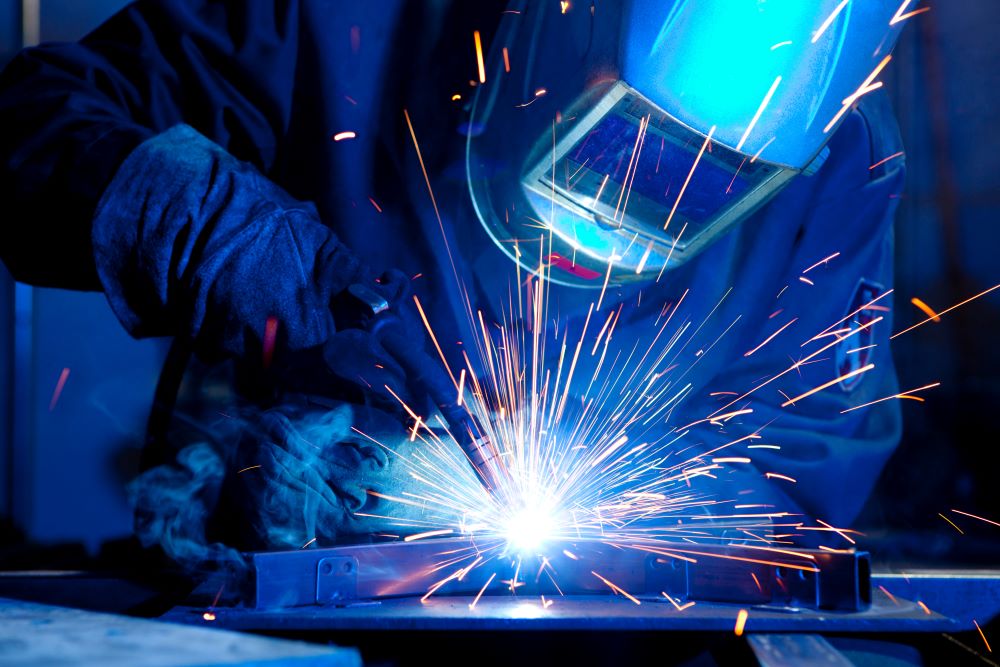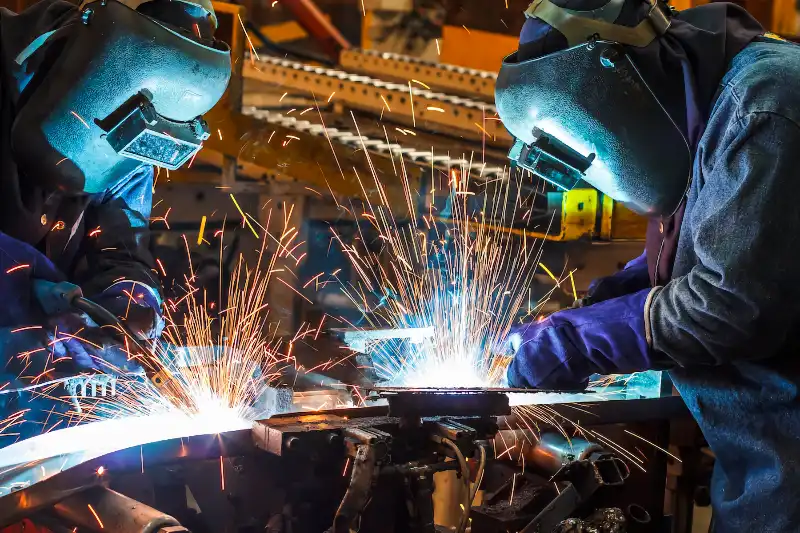Usual Welding Repair Work Issues and Just How to Address Them Efficiently
Welding repair work usually come across a variety of concerns that can jeopardize the stability of the final product. Usual issues include inadequate infiltration, porosity, and misalignment, to name a few. Each issue provides unique obstacles that require particular approaches for resolution. Understanding these problems is vital for welders intending to boost their abilities and outcomes. This discussion will check out these common welding repair service issues and efficient techniques to address them.
Insufficient Penetration
Inadequate infiltration occurs when the weld metal falls short to fully fuse with the base product, resulting in weak joints and possible structural failings. This issue frequently comes from inadequate warm input, wrong electrode angle, or incorrect welding rate. Welders might run into poor penetration due to a mistake of the essential criteria for a specific product thickness or kind. Furthermore, contamination on the base product's surface can impede reliable bonding, aggravating the problem. To deal with insufficient penetration, welders must guarantee ideal setups on their tools and keep a clean work surface. Regular examination of welds is suggested to recognize any deficiencies early, enabling prompt improvements and the prevention of compromised architectural integrity in bonded settings up.
Porosity
Porosity is an usual problem in welded joints that manifests as little gas bubbles trapped within the weld steel. This flaw can endanger the integrity of the weld, leading to lowered strength and prospective failure under stress and anxiety. Montana Mobile Welding and Repair Belgrade Fabrication. Porosity normally occurs from contamination, dampness, or inappropriate welding methods, which permit gases to run away right into the liquified weld swimming pool. To resolve porosity, welders should ensure proper surface prep work, preserve a tidy functioning atmosphere, and make use of ideal welding specifications. Furthermore, selecting the appropriate filler material and securing gas can alleviate gas entrapment. Normal examination and testing of welds can assist determine porosity early, guaranteeing prompt restorative activities are taken, therefore preserving the quality and integrity of the bonded structure
Imbalance
Misalignment in welding can emerge from various aspects, consisting of inappropriate arrangement and thermal development. Comprehending the root triggers is crucial for efficient resolution. A number of correction strategies are available to straighten components and guarantee architectural integrity.
Sources of Imbalance
Welding misalignment commonly originates from a selection of underlying concerns that can endanger structural integrity. One main cause is improper fit-up of elements before welding, which can lead to gaps and uneven surface areas. Variants in thermal development throughout the welding procedure can additionally result in distortion, especially if the products being joined have different coefficients of expansion. Additionally, inadequate securing and fixturing might fall short to hold parts firmly in area, bring about activity throughout welding. Badly maintained devices, consisting of welding equipments and tools, may present incongruities in the weld grain, further adding to imbalance. Ultimately, driver mistake, originating from inadequate training or experience, can also play a substantial duty in creating misaligned welds.
Adjustment Methods Offered
Dealing with imbalance effectively calls for a mix of corrective methods tailored to the particular issues handy. One common approach is making use of components or jigs to hold components in the correct position throughout welding, guaranteeing constant placement. Furthermore, preheating the materials can aid decrease distortion and boost fit-up. For significant misalignment, mechanical realignment techniques, such as utilizing hydraulic jacks or clamps, can be employed to fix the setting before welding. Post-weld heat therapy may also be needed to eliminate stresses triggered by misalignment. Ultimately, mindful inspection and modification throughout the arrangement stage can stop imbalance concerns from becoming significant problems, advertising a smoother welding process and boosting overall architectural honesty.
Distortion
Distortion is a common challenge in welding that can arise from numerous elements, including irregular heating & cooling. Recognizing the sources of distortion is important for implementing effective prevention techniques. Resolving this concern not just enhances architectural stability however additionally boosts the overall high quality of the weld.
Root causes of Distortion
When based on the intense heat of welding, products commonly undergo changes that can bring about distortion. This sensation largely arises from thermal expansion and tightening during the welding procedure. As the weld location heats up, the material broadens; upon air conditioning, it gets, which can develop inner anxieties. On top of that, irregular heating across a work surface can intensify these tensions, leading to warping or flexing. The kind of product also plays a substantial function; steels with differing thermal conductivity and coefficients of development may respond differently, causing uncertain distortions. Furthermore, bad joint layout and poor fixturing can contribute to imbalance throughout welding, boosting the possibility of distortion. Understanding these causes is essential for efficient welding repair and prevention approaches.
Prevention Techniques
Effective avoidance strategies for distortion throughout welding concentrate on managing warmth input and making sure appropriate joint layout. Maintaining a consistent warm input assists to reduce thermal expansion and tightening, which can lead to distortion. Making use of strategies such as pre-heating the work surface can also minimize the temperature gradient, advertising uniform home heating. Additionally, choosing suitable joint styles, such as T-joints or lap joints, can improve stability and minimize tension focus. Carrying out correct fixturing to secure the work surfaces in location further aids in maintaining alignment during the welding process. Finally, staggered welding sequences can disperse warmth much more uniformly, protecting against localized distortion. By using these approaches, welders can considerably decrease the probability of distortion and improve the overall high quality of their welds.
Cracking
Splitting is an usual issue experienced in welding repair work, commonly resulting from numerous aspects such as incorrect cooling prices, material selection, or poor joint prep work. The occurrence of fractures can greatly compromise the honesty of the weld, causing prospective failings throughout operation. To resolve this concern, welders should initially examine the origin, making certain that products work and appropriately selected for the certain application. Furthermore, controlling the air conditioning price throughout the welding procedure is necessary; quick air conditioning can induce stress and lead to fracturing. Proper joint layout and prep work also contribute to decreasing the threat. Carrying out these strategies can boost weld top quality and longevity, ultimately reducing the chance of fracturing in finished weldments.

Incomplete Blend
A significant issue in welding repair work is insufficient combination, which takes place when the weld steel does not adequately bond with the base material or previous weld passes - Welding. This problem can lead to weaknesses in the joint, possibly endangering the honesty of the welded framework. Aspects contributing to insufficient blend include not enough heat input, inappropriate welding method, and contamination of the surface areas being signed up with. To resolve this problem effectively, welders should ensure appropriate pre-weld cleansing and surface area prep work, as well as change their welding parameters to accomplish adequate penetration and blend. Normal examination during the welding procedure can additionally help identify incomplete combination early, enabling prompt corrective procedures to enhance the overall quality of the weld
Overheating
While welding repairs can enhance architectural integrity, overheating provides a substantial challenge that can bring about product deterioration. Excessive warmth throughout welding can modify the mechanical properties of steels, resulting in lowered toughness, raised brittleness, and bending. This phenomenon is especially vital in high-stress applications where architectural integrity is vital. Identifying getting too hot can entail aesthetic evaluations for discoloration or distortion, in addition to checking temperature throughout the welding procedure. To alleviate the threats connected with overheating, welders must use proper strategies, such as controlling warmth input, adjusting traveling rate, and making use of suitable filler products. Additionally, executing pre- and post-weld warm treatments can help bring back product residential or commercial properties and enhance the total quality of the repair website service, making certain lasting performance and safety and security.
Often Asked Questions
What Are the Typical Indications of a Welding Defect?

Just How Can I Test My Welds for High quality?
To examine welds for top quality, one can utilize visual examinations, ultrasonic screening, and radiographic techniques. Each technique guarantees structural stability, identifies defects, and confirms adherence to defined criteria, eventually boosting the integrity of the bonded joints.
What Security Safety Measures Should I Take While Welding?
When welding, one must prioritize safety and security by wearing suitable individual protective tools, ensuring correct air flow, securing combustible products away, keeping a clean office, and being conscious of environments to avoid mishaps and injuries.
Can I Fix a Weld Without Redoing the Entire Joint?
Repairing a weld without redoing the whole joint is feasible, relying on the damage (Belgrade). Strategies such as grinding, including filler product, or utilizing a welding procedure can effectively deal with certain problems while maintaining the bordering framework
What Devices Are Crucial for Reliable Welding Services?
Essential tools for effective welding fixings include a welding machine, cable brush, grinder, safety equipment, clamps, and filler products. Each tool plays an important function in making certain quality and security throughout the fixing process. Porosity usually arises from contamination, wetness, or improper welding strategies, which permit gases to run away into the liquified weld pool. Poorly kept devices, consisting of welding makers and tools, may present incongruities in the weld bead, additional contributing to imbalance. When subjected to the extreme warm of welding, materials typically undertake changes that can lead to distortion. Splitting is a typical concern experienced in welding repairs, typically resulting from various variables such as improper cooling prices, material choice, or poor joint prep work. A substantial issue in welding fixings is insufficient combination, which occurs when the weld steel does not properly bond with the base product or previous weld passes.